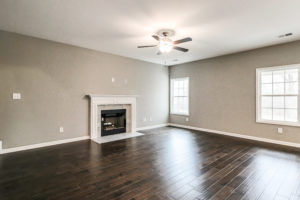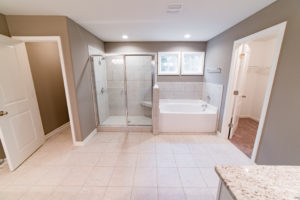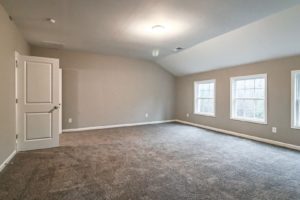


When you are building a new home or remodeling your current residence, deciding what flooring is best in each room can be overwhelming, but it doesn’t have to be. By asking yourself a few questions and knowing the features and details of popular flooring selections, you’ll be able to narrow your options and choose the flooring that works best for you and your lifestyle.
Before we go over what each type of flooring has to offer, ask yourself these questions:
Style:
What aesthetic do you want your home to have? What’s your style– classic, modern, rustic, medieval, etc?
Location and Lifestyle:
What room are you designing? Is it more prone to moisture, i.e. basements and bathrooms? Will children be crawling around? What about pets? Are you accident prone– frequent spills or falls? How will you be using the space?
Budget:
What can you afford? Is it easy to clean? Does it stain or wear easily? Is it durable or will it require ongoing maintenance? Does it require a special kind of maintenance?
The Floors
Let’s take a look at five of the most popular flooring selections and how they meet each of the above criteria.
Walk on Wood
Hardwood flooring has been a timeless and widely loved option by homeowners for ages. Wood floors come in a variety of styles and shades that can complement any room in your home. Their durability, beauty, and simple maintenance are top selling points. However, installing and purchasing wood floors can be costly and difficult if a professional is not used. Homes with children or pets have a greater risk of acquiring scratches and damage to the wood, and refinishing is expensive as well.
Types of Tile
Tile comes in a variety of shapes, sizes, and materials. It’s relatively inexpensive and it offers great benefits for certain areas of your home. Tile is durable and water resistant. It doesn’t stain or scratch easily, so it is perfect for basements, bathrooms, and areas spills and stains are likely to happen. Tiles are also easily repaired. Whether you have the flooring installed for you or you do it yourself, repairing or replacing a tile, should it become broken, does not require a professional. A few tools, tile adhesive and grout, and one of the extra tiles from installation are all you need. Some cons of tile flooring are the temperature of the floors, noise, and the maintenance of the grout. Tile floors get cold and can be quite noisy to walk on, and while the tiles themselves are easy cleaning, the grout, if not cared for properly can stain and hold dirt. Grout can require serious, detailed maintenance to keep clean.
Laminate
Laminate flooring is a cost effective alternative to the material it resembles. Its features include being waterproof and one of the most resilient flooring materials. Linoleum is also environmentally friendly. Be sure to seal the perimeter of the flooring in rooms such as the bathroom and kitchen (by the sinks and tub) where water may reach the edges of the flooring. If the water penetrates underneath the linoleum it will damage the substrate and cause the flooring to peel.
Carpet
Carpet is a popular choice among flooring, especially for bedrooms and spaces you want a soft, cozy, and quiet atmosphere. Carpet flooring is perfect for areas you want to keep the noise down. Shoes and feet do not echo on carpet, like they do on other flooring materials because of its soft design.The cost of carpet varies depending on the quality, style, and size much like the other flooring options. Carpet installation is swift and simple, but maintenance and cleaning requires more effort than other flooring options. Choose carpet if you desire that soft and cozy feeling in your home and can handle the cleaning.
Vinyl
Vinyl is quiet and soft similarly to carpet as well as inexpensive. Vinyl technology has come a long way. Luxury vinyl is a bit more expensive, but it is great if you want to achieve a wood or stone floor look for a lower cost, less maintenance, and simple installation process. Installation can be done without a professional and takes just a few hours. There are two ways to install vinyl flooring– using floorte floors or direct glue dry back flooring. Floorte floating floors are tiles/ planks that fit together and require a bit of hammering to install. Direct glue Dry vinyl installation requires spreading a special adhesive mixture on the floor before applying the tiles. Vinyl works well in a noisy room such as the laundry room, kitchen, and even bathrooms.
The best flooring for a house is different for every homeowner. Remember to think about the style you want, the elements of and how you use the room, and your budget. If you’re still unsure, ask for input from your home builder for your new construction or renovation- with their experience with a variety of flooring materials, they may be able to suggest some options you haven’t considered yet. Your builders can also give their professional and personal opinion on your top selections to help you choose the perfect flooring for you and your home.


